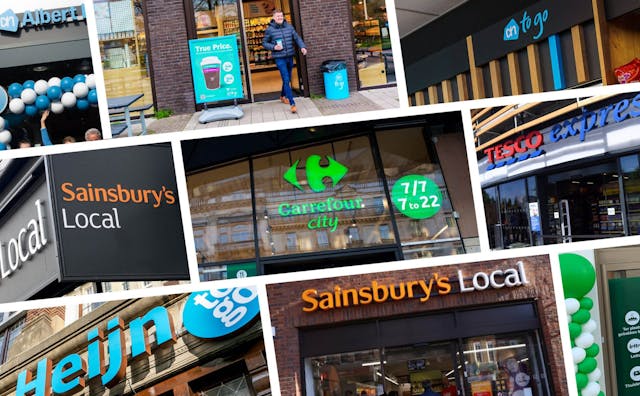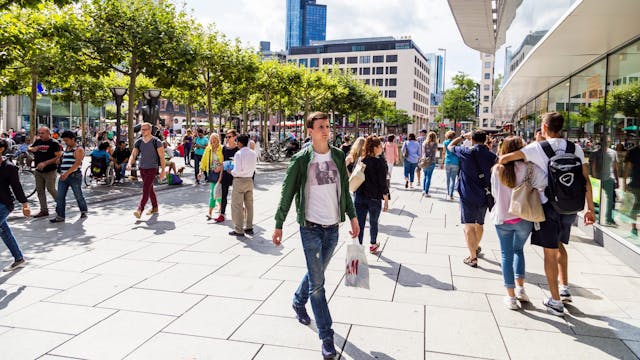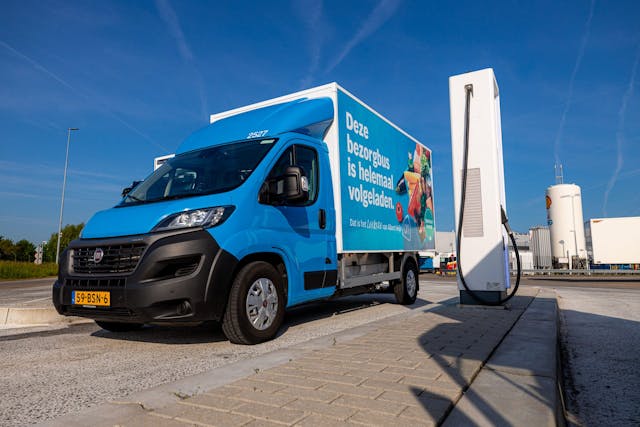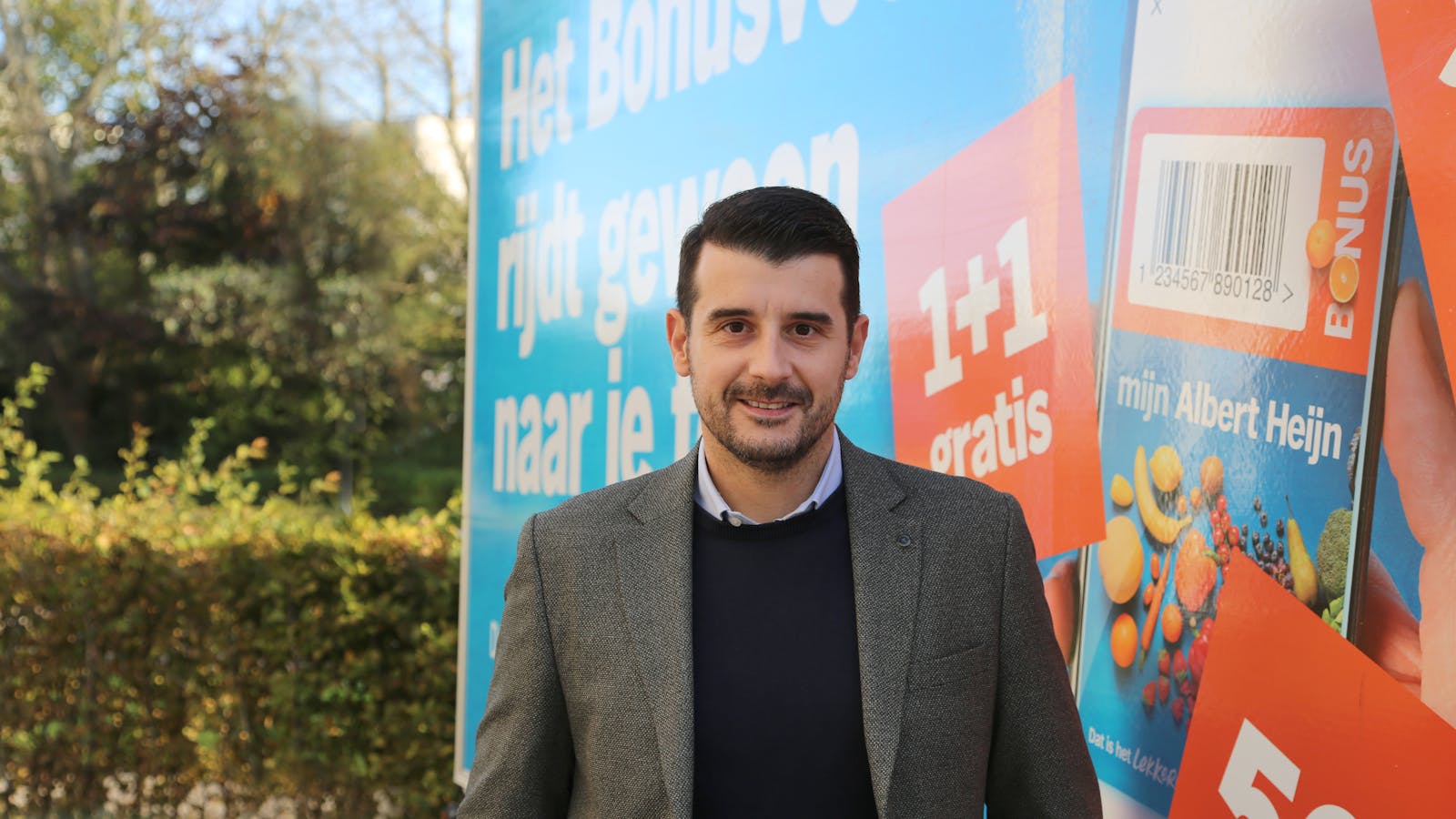1. How is urbanization changing store delivery logistics?
Urban growth is reshaping the very footprint of retail. As cities expand and household sizes shrink, large-format stores are being replaced by smaller convenience stores in dense areas. These outlets have less storage and require more frequent, agile deliveries—sometimes multiple stops in one trip.
For logistics teams, this means shifting from bulk replenishment to streamlined distribution. Smaller-format stores introduce new planning requirements that can’t be handled manually or by static routing tools. Advanced planning systems help retailers navigate these changes by optimizing multi-stop routing, adjusting frequency by region or store profile, and accounting for urban restrictions like low-emission zones and delivery hour regulations.
This shift will only intensify over the next five years as urban populations increase and cities legislate stricter transport rules. Retailers will need to embrace APS capabilities that balance customer expectations, compliance, and delivery cost in urban landscapes.

George Ninikas, Director Retail & Wholesale at ORTEC.
"Retailers now engage in "streamlined distribution," optimizing delivery routes and schedules to meet the changing needs of these smaller-format stores."
2. How are digital and omnichannel trends reshaping store delivery?
Online shopping has permanently altered how retailers fulfill orders and manage store supply. Brick-and-mortar stores now double as fulfillment nodes, and delivery networks must support multiple workflows: replenishment, click-and-collect, curbside pickup, and even local ship-from-store models.
This hybrid structure means inventory and delivery planning are no longer linear. Routing and load planning must consider not just volume, but order type, urgency, and destination mode. For instance, a single vehicle might need to deliver frozen goods to one store, handle click-and-collect fulfillment at another, and return returns from a third.
Direct to store delivery operations will continue to evolve alongside customer preferences. APS tools enable retailers to forecast based on channel mix, assign loads more intelligently, and optimize routing for hybrid delivery flows. By integrating these systems with order management and fulfillment software, companies can plan at a network level—not just by siloed store or DC.
As retail becomes more interconnected, the ability to optimize store delivery within this complex ecosystem will define the difference between profitability and margin erosion.
3. What role does predictive planning play in managing volatility?
Volatility has become a permanent feature of retail logistics. Promotions, regional weather events, global supply constraints, and shifting consumer patterns all contribute to demand spikes and dips that strain static delivery plans.
Traditional planning methods fall short in this environment. That’s where predictive planning within APS platforms becomes vital. These systems leverage historical data, real-time inputs, and probabilistic modeling to create adaptive, capacity-aware delivery plans.
Retailers can use these tools to test and compare scenarios: how will an unplanned snowstorm impact capacity? How many additional stops can be absorbed on a holiday weekend? APS allows planners to simulate, prepare, and adjust—often days or hours in advance.
This capability isn’t just reactive. With integrated forecasting, retailers can optimize fleet deployment, labor schedules, and slot allocations to match projected demand patterns. In a logistics landscape marked by uncertainty, scenario-driven planning becomes a competitive advantage.
As we approach 2030, the retailers with the greatest resilience will be those who plan for variability—not around it.

George Ninikas, Director Retail & Wholesale at ORTEC.
"Predictive planning is not confined to specific timeframes like tactical or strategic planning. Instead, it focuses on creating flexible plans based on predictions for the future. Retailers must anticipate demand fluctuations and have the tools to adapt swiftly."
4. What does smarter collaboration with 3PLs look like?
Outsourcing transportation is common—but optimizing that partnership is not. As more retailers rely on third-party logistics (3PL) providers, many struggle to retain control over planning, execution, and service quality.
Disconnection between planned and executed routes leads to inefficiency, especially when 3PLs are incentivized by metrics like distance or labor hours instead of outcome KPIs. Misalignment results in inflated costs, missed SLAs, and damaged customer trust.
APS technology provides a bridge. These systems enable both retailers and 3PLs to share route plans, track execution in real time, and analyze adherence to planned paths. With transparent dashboards and shared KPIs, both sides can work toward the same operational goals—minimizing mileage, improving delivery accuracy, and using fewer vehicles.
As outsourcing grows more strategic by 2030, joint planning platforms will replace spreadsheets and static handovers. Retailers will look for partners who not only move product, but also participate in collaborative planning and continuous improvement.
5. How is sustainability driving delivery innovation?
Sustainability goals are no longer driven just by corporate social responsibility—they’re increasingly driven by regulation, customer expectations, and investor pressure.
Retailers are being asked to reduce CO2 emissions per order, switch to electric or alternative fuel vehicles, and publish their environmental performance. While progress is being made, the road to net zero requires smarter planning, not just greener trucks.
APS helps optimize delivery networks to reduce environmental impact by: - Consolidating routes to reduce miles - Avoiding repeat trips or underused capacity - Planning EV-compatible routes with range and recharging constraints - Offering “green” delivery slot options to customers during checkout
By embedding sustainability into route planning, delivery slot logic, and fleet usage, retailers can turn ESG compliance into a customer-facing differentiator. Looking forward, eco-efficient delivery will be not just a choice, but a core business requirement.

"Electric vehicles (EVs) have limited range and require periodic recharging, making route planning and scheduling even more complex. Additionally, emission-free zones in city centers may necessitate using EVs exclusively."
6. Can store delivery scale with labor shortages?
The labor market continues to tighten. Drivers are in short supply, especially in urban areas with higher cost of living. Warehouses face both staffing and skill shortages. In this context, logistics leaders must use their available resources as intelligently as possible.
APS platforms offer critical capabilities in labor optimization: - Real-time demand planning informs how many drivers are needed - Smart shift planning allocates staff based on skillsets and store needs - Self-service scheduling tools improve employee retention and flexibility
Rather than over-hiring or scrambling to cover missed shifts, companies can use dynamic planning to stabilize workforce allocation—especially during seasonal peaks. APS also supports cross-functional labor use, helping warehouse and transportation teams work in sync.
As workforce dynamics evolve through 2030, businesses that plan around human capacity—not just delivery volume—will maintain higher service levels at lower cost.
Bonus Insight: How does continuous improvement keep you competitive?
Even with perfect forecasts and plans, real-world execution always introduces variability. Traffic delays, missed time windows, store-level issues—these moments create a gap between expectation and reality.
The most forward-thinking logistics operations treat this gap as fuel for improvement. By capturing execution data—such as actual stop time, drive time, delay reasons—retailers can update the assumptions within their planning models.
Advanced planning systems can incorporate AI and machine learning to automatically adjust planning parameters over time. For example: - Refine stop durations by store and time of day - Update average delivery speed by zone and vehicle type - Flag patterns of underperformance or route failure
This learning loop ensures that delivery plans don’t just get made—they get better. As the retail sector races toward 2030, agility will belong to those who learn fastest from the front line.
Final Thoughts: What’s next for store delivery leaders?
Store delivery optimization is no longer a behind-the-scenes concern—it’s a boardroom-level priority. Retailers that want to compete on customer experience, efficiency, and sustainability must treat their delivery network as a strategic asset.
The path forward requires more than incremental change. It demands smarter planning, deeper coordination, and technology that adapts in real time. That’s why advanced planning systems will be at the heart of the most resilient, efficient, and profitable retail logistics networks by the time we reach 2030.
About George Ninikas
As the Industry Director for Retail and Wholesale at ORTEC, George Ninikas holds a pivotal role in shaping the company's strategy and market presence in the retail sector. By harnessing the power of cutting-edge technology and advanced analytics, he aims to improve the efficiency, profitability, and customer experience of ORTEC’s clients. His primary objective is to translate technical solutions into a language that customers in the market can understand, promoting the company's expertise and expanding its reach. Alongside his career, George pursued his academic interests by completing a Ph.D. in Operations Research and teaching for a series of years at the University of Aegean.

Ready to take the next step?
Let’s explore how your store delivery operation can evolve—strategically, sustainably, and at scale.
Talk to our team to see how APS can support your 2030 delivery goals.
